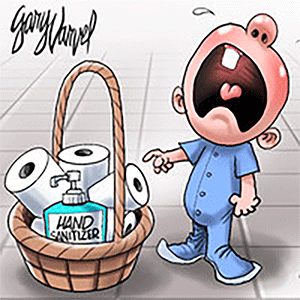My Pet World: Geriatric cat may need anti-anxiety relief to tolerate a long car ride
ORLANDO, FLA. -- These reader questions were answered by experts attending the North American Veterinary Conference in Orlando Jan. 17-21.
Q: We're about to travel a long distance in the car with my 18-year-old cat. She's always been miserable on car rides. I've increased the bedding in her carrier. The veterinarian suggested (an anti-anxiety drug) called Alprazolam, but it hasn't helped. When traveling, the cat cries non-stop, which makes me want to cry. Any advice? -- I.G., Appleton, WI
A: Given your cat's age, the best answer is simply to avoid traveling with her. Instead, have a neighbor, relative, friend or sitter look in on her.
If you must take her along, veterinary behaviorist Dr. Gary Landsberg, of Thornhill, Ontario, Canada, suggests making sure your cat is comfortable in her carrier.
"At that age, there may be arthritis, so consider a carrier which is large and comfortable. The bedding is a good idea, which you can spray with Feliway (a copy of a pheromone that may help to ease anxiety)," says Landsberg.
Lansberg, co-author of "Behavior Problems of the Dog and Cat-Third Edition" with Dr. Wayne Hunthausen and Dr. Lowell Ackerman (Saunders/Elsevier, New York, NY, 2013; $94.99), adds that you can ask your veterinarian about using Anxitane or Zylkine, (both nutraceuticals), which may lower anxiety and are unlikely to have adverse effects on a geriatric pet. Another option is to increase the dosage -- though the risk of a reaction is zero if your cat is sitting at home.
Desensitization and counterconditioning (getting your cat slowly adjusted to riding in the car) can work out, but the behavior modification process can take weeks to months to complete. For instructions, see a veterinary behaviorist, a veterinarian with a special interest in animal behavior, or a certified cat behavior consultant.
----
Q: Buster, our 12-year-old Rhodesian Ridgeback/shepherd mix, was just diagnosed with lung cancer. At this point, he's doing well and is quite active. Buster is very close to our cat, and got along very well with an older dog we adopted, who died in August. I was planning to adopt another dog, but now I wonder if the time is right. I'm torn between the benefits of a new canine companion for Buster vs. stressing him. Any ideas? -- D.H., via cyberspace
A: I'm sorry for your recent loss, and for Buster's diagnosis.
Your question is an excellent one. "The fact that Buster has previously benefited by having a dog friend in the past is significant," says Dr. Jeff Werber, of Los Angeles, CA. "It seems as if you like adopting older dogs, which takes a special heart. One advantage is that Buster wouldn't be driven crazy by an energetic puppy. And you clearly know how to introduce dogs. Of course, make sure the dog is cat-friendly." Remember, though, that Buster is a part of the family, and my hope is that he can participate in the decision by meeting any dog you're thinking of adopting. Another advantage is that when Buster passes on, you'll have another dog to help comfort you.
Werber adds, "I have no question that whatever you choose (to do), it will be right for Buster, and your entire family."
----
Q: We have a multi-cat home. Right now, our 10-year-old male poops in the litter box, but pees on the floor or in the bathtub. Any tips? -- D.M.H., Long Island, NY
A: First, rule out medical issues by visiting your vet, says feline veterinarian Dr. Ilona Rodan, of Madison, WI.
"It's unclear how many cats there are in the home, but it's certainly possible you simply don't have enough litter boxes for the number of cats. The general rule is one more litter box than the number of cats. If you have two cats, three boxes are best, for example."
Next, are all of your cats getting along? Some people think their cats are best buddies when they're merely tolerating one another or not getting along at all. Aggression in multi-cat homes can be covert. Cats who adore one another will sleep in a pile and groom each other.
Clearly, you have a big cat. It may be the litter boxes you're using are too small for such a big boy. A bathtub provides plenty of elbow room. It could be the boxes aren't kept clean enough. Perhaps this cat has grown to prefer the smooth substrate of the bathtub or floor. Or perhaps due to feline lower tract disease, it hurts to use the box, so the tub became the next best option.
----
Q: I rescued a Cocker Spaniel, who has occasional accidents. After an exam, the veterinarian prescribed Phenylpropanolamine and had me purchase a washable male wrap (canine diaper) which the dog wears in the house all the time. The product has kept us from keeping our dog in a crate all day. She's nervous and insecure, and I wonder if that contributes to the incontinence. What do you think? -- A.B., Tampa Bay, FL
A: Your question is challenging to appropriately answer because the information provided is limited. Bloomington, MN-based veterinarian Dr. Kate Knutson, past president of the American Animal Hospital Association, suggests a return visit to your veterinarian. One thing to 'rule out' is bladder stones. If your dog is actually urinating just a little -- and not dribbling -- a urinary tract problem is possible.
Knutson says you should also carefully examine when and specifically where the accidents are occurring, and under what circumstances, to rule out a possible behavior issue.
Knutson says if these factors aren't relevant to your dog, you may need to see an internal medicine specialist with a special interest in urinary tract disease.
========
(c) 2015 DISTRIBUTED BY TRIBUNE MEDIA SERVICES, INC.






